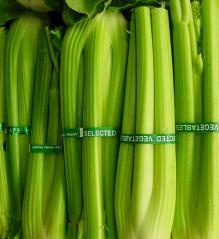Make Your Own Vegetable Stock
by Nicole Pinson, Urban Horticulture Agent and Master Gardener Coordinator and
Dr. Mary Keith, Food, Nutrition and Health Extension Agent UF/IFAS Extension Hillsborough County
I love to cook, and this year one of my resolutions is to make more meals at home. I find chopping vegetables (like weeding!) cathartic, and preparing a tasty, elegant meal for myself is a gift. So, while cooking tonight’s mushroom barley soup (it’s getting really cold in Florida- time to start making and freezing soups!), I thought of this month’s tip.
We chop our veggies and add them to meals. And, some of us are smart enough to save those kitchen scraps and throw them on the compost pile, with the understanding that our kitchen scraps will add nutrients to the compost pile, rendering them into a rich, fertile soil we can later add to more crops or our landscape beds.
I have a suggestion to make those kitchen scraps go even further: use them for stock and then compost them! Two uses for the same valuable “scraps.”
Homemade stock is easy and lends a delicious base to soups. When I cook, I keep a zip top bag next to the wood chopping block for tops of carrots, onion skins, tomato cores. For tonight’s dinner, my bag was stuffed with onion and garlic skins, carrot tops and bottoms, celery stems and leaves (I actually love to use celery leaves in dishes and as a garnish) and mushroom stems.
If you have space in the freezer, you can gradually accumulate a good mixture of vegetable scraps over time, to get a better blend of flavors. Vegetables in the cabbage family in particular – turnips, cabbage, cauliflower, broccoli – are quite strong-flavored and can overpower the flavor. Once your frozen bag is full, follow Mary’s directions below to make your stock.
Place clean kitchen scraps in a pot and cover with water. Bring to a boil and then simmer uncovered from 15 minutes to 1 ½ hours. The longer cooking will release more flavor if you have the time. Then squeeze or strain all the water out of those vegetables. Just straining them makes a clearer stock, while pressing them will often make a cloudy but thicker stock. I use a wooden spoon in a sieve for pressing, but a potato masher would work well too.
Use the stock immediately in soups or freeze and save for later. Stock will keep for 3-5 days in the refrigerator or 8 months in the freezer. Freeze it in quantities that you will use at one time, so that you can thaw just enough for your next recipe.
After you’ve made your meal with fresh vegetables, use the pieces to make your stock. By making your own homemade stock, you’ll create delicious meals, add more minerals and maybe a few vitamins to your food and use more of the produce you’ve purchased. You will also be able to make it with little or no salt, a big benefit since most commercial stocks and broths are very high in sodium. Then, discard those veggies on your compost pile.
Now, you successfully got “more bang for your buck,” cooking meals at home, making fresh stock and composting. Bon appétit!
Nicole Pinson
Extension Agent – Urban Horticulture
Master Gardener Coordinator
UF/IFAS Extension Hillsborough County
5339 County Road 579
Seffner, FL 33584-3334
p: (813) 744-5519 X 54145
nicolepinson@ufl.edu
pinsonn@hillsboroughcounty.org




